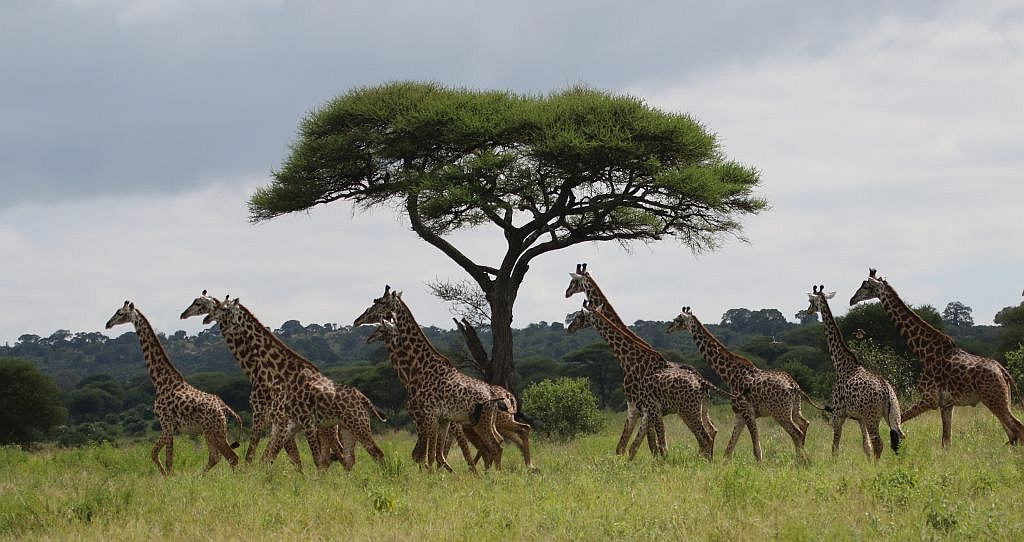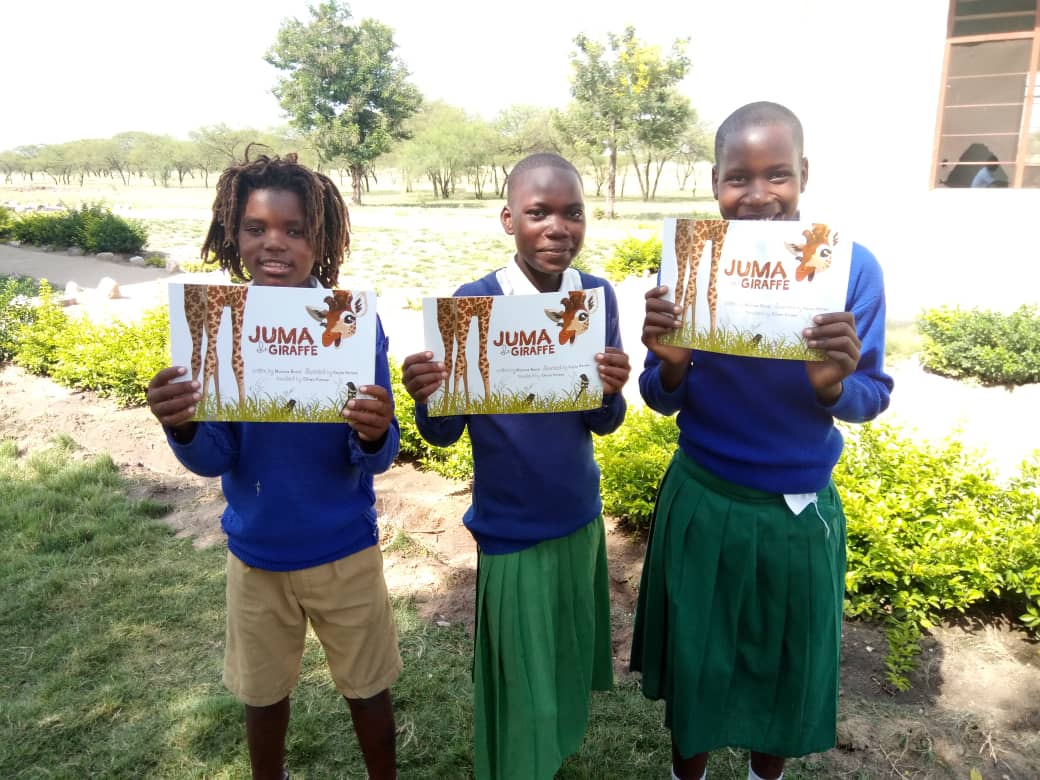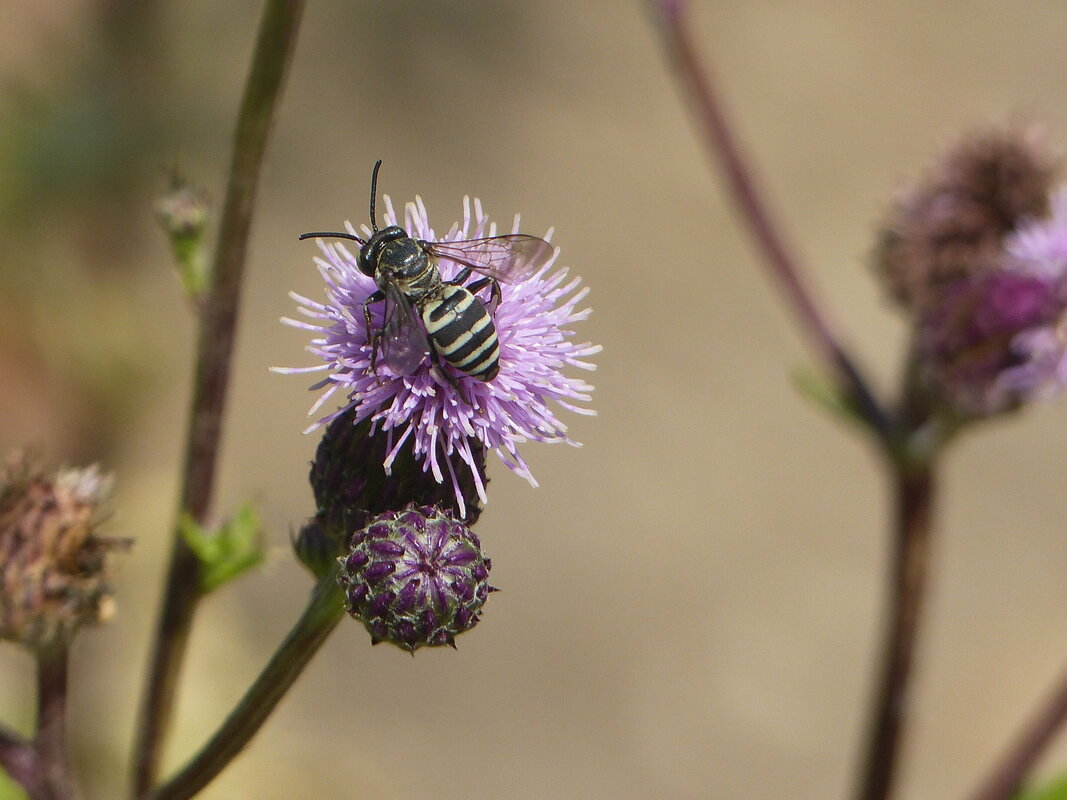|
0 Comments
Juma the Giraffe is featured in the Peace For Conservation environmental education program in communities west of Serengeti National Park Tanzania. Kids learn about giraffes and other wildlife, write songs praising giraffe, paint, and do good deeds in this very cool program. #StandTallForGiraffe
CORVALLIS, Ore. - A groundbreaking two-year study in southern Oregon found greater abundance and diversity of wild bees in areas that experienced moderate and severe forest fires compared to areas with low-severity fires. The study, published today in the journal Ecosphere by researchers in the Oregon State University College of Forestry, is the first to demonstrate that wildfire severity is a strong predictor of bee diversity in mixed-conifer forest.
Bees are the most important among the Earth's pollinators, which combine for an estimated $100 billion in global economic impact each year. Oregon is home to more than 500 species of native bees. Animal pollinators enhance the reproduction of nearly 90 percent of the Earth's flowering plants, including many food crops. The pollinators are an essential component of insect and plant biodiversity. Bees are the standard bearer because they're usually present in the greatest numbers and because they're the only pollinator group that feeds exclusively on nectar and pollen their entire life. Scientists led by OSU forest wildlife ecologist Jim Rivers in 2016 began trapping bees at 43 sites in forests burned by the 2013 Douglas Complex fire that scorched nearly 50,000 acres north of Grants Pass. They collected bees with blue-vane traps, which attract the insects by reflecting ultraviolet light, and used satellite imagery to determine fire severity. "Twenty times more individuals and 11 times more species were captured in areas that experienced high fire severity relative to areas with the lowest fire severity," said Sara M. Galbraith, a postdoctoral researcher in the College of Forestry. "We detected a large number of bees in recently burned forest patches. The bees represented five families and a large subset of Oregon's wild bee species." At low-severity sites, flames were mostly confined to low-growing vegetation. "If you weren't looking for the markers of fire, in the low-severity spots you wouldn't know that they had burned," Galbraith said. "The canopy is more closed, and there wasn't a lot of visible evidence of fire except for blackened areas on the tree trunks." In contrast, some of the high-severity sites had a completely open canopy. "There were many more flowering plants in the understory because the light limitation was gone," she said. "The flowering plants and another critical habitat component for maintaining bee populations -boring insect exit holes used by cavity-nesting bees - both increased with fire severity." And the two most abundant genera among the trapped bees, Bombus (bumblebee species) and Halictus (sweat bee species), each responded positively to high fire severity despite having different foraging ranges. "This research adds to the evidence that there is high biodiversity in early seral forests - the beginning stages of forest development - and moving forward, the amount and location of this habitat could have an impact on services like pollination in the landscape overall," she said. "Half of Oregon is forested, yet we know very little about bees in forests, especially managed conifer forests. With this fundamental information, we can begin to understand the best management actions that can promote pollinator populations within managed forests." Previous studies primarily just considered, "did it burn or didn't it burn?'" Galbraith said. "Our study took into account the mosaic of habitats that you find after fires in many regions of the world," she said. "We found that burn severity is really useful for predicting where the bee habitat will be after a fire. It makes sense that some organisms would have evolved to do well after severe burning in this fire-adapted landscape." The Wildlife Warrior Clubs in Kenya are using our new African Rhinos: Conservation Crash! poster to teach kids about rhino ecology and conservation, thanks to our partners at Land & Life Foundation. We are excited that our education program is spreading to other countries in east Africa! #ConservationCrash #AfricasGiants Wild Nature Institute makes our posters and activity guides free to download and print, and our storybooks can be viewed in English and Swahili as videobooks. Our goal is for children in Africa, the USA, and around the world to be inspired by charismatic mega-herbivores rhinos, giraffe, and elephants, and to love and protect wild nature wherever they live. Thank you to our Celebrating Africa's Giants partners PAMS Foundation, our funders at USAID, The Living Desert, Sac Zoo, Columbus Zoo and Aquarium, Tulsa Zoo, Tierpark Berlin, and the Pollinator Project, and our design and production team, for helping us make these beautiful educational materials and get them into the hands and hearts of children around the world.
|
Science News and Updates From the Field from Wild Nature Institute.
All Photos on This Blog are Available as Frame-worthy Prints to Thank Our Generous Donors.
Email Us for Details of this Offer. Archives
July 2024
|
|
Mailing Address:
Wild Nature Institute PO Box 44 Weaverville, NC 28787 Phone: +1 415 763 0348 Email: [email protected] |
|






 RSS Feed
RSS Feed
